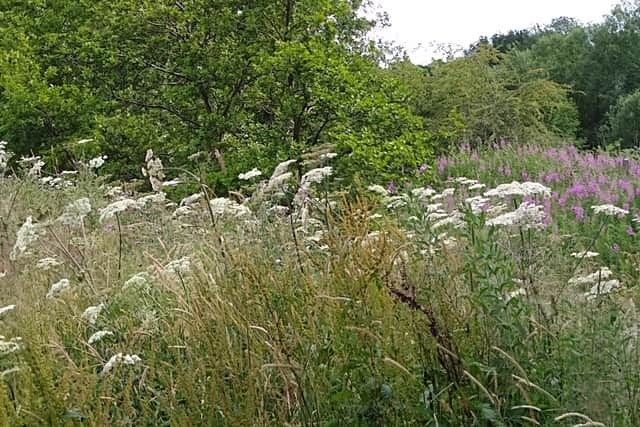Giant hogweed Leeds: Investigation launched on Cookridge estate after resident raises 'danger' concerns about plants
and live on Freeview channel 276
Michael Lowry told the Yorkshire Evening Post that he spotted what he claimed appeared to be giant hogweed, growing near the beck on Soggy Bottom in Cookridge, near the Moseley Green estate.
He said he raised his concerns with Leeds City Council and the developers of the estate, Taylor Wimpey.
Advertisement
Hide AdAdvertisement
Hide AdWarnings have been issued about giant hogweed, which has been described as the country’s ‘most dangerous plant’. This is due to the sap from the plant, which can cause painful burns, particularly when exposed to sunlight.


All footpaths at the Moseley Green development are clear of the weeds, the YEP understands.
After being contacted by the YEP, a council spokesperson said one of the local authority’s officers visited the site on Thursday (June 29) and “confirmed the presence” of giant hogweed. It said it was liaising with the landowner for a “swift resolution”.
A Taylor Wimpey spokesperson said it instructed its own “environmental consultant” today (June 30) to investigate the plants.
Advertisement
Hide AdAdvertisement
Hide AdHowever, they said it had been identified as “common native hogweed”, rather than giant hogweed, in findings that appear to conflict with that of the council’s.


Mr Lowry said he first noticed the plant growing earlier this week in the north Leeds suburb.
He said: “I’d been reading about how dangerous it was so I contacted the council’s gardens department. They didn’t do anything for a day or two and then after they came out they said ‘It definitely is giant hogweed but it’s not our responsibility’.”
He added: “It’s by a completed development of over 400 houses.
Advertisement
Hide AdAdvertisement
Hide Ad"I’m worried that people don’t realise what this stuff is. If a child or animal goes in to it they could be severely burnt by it.”
A spokesperson for the council said: “A Leeds City Council officer attended the affected area yesterday and confirmed the presence of giant hogweed. As the land is not owned by Leeds City Council, we are now liaising with the landowner to get a swift resolution to the matter.”
The Taylor Wimpey spokesperson said it planned to visit the site next week to conduct “further checks”.
They said: “After concerns were raised by residents at our Moseley Green development, Taylor Wimpey instructed an environmental consultant to examine the plants (30/6) and we can confirm that these have been identified as common native hogweed. We will visit the site again next week to conduct further checks and implement any necessary treatment plans following advice from our consultant."
Advertisement
Hide AdAdvertisement
Hide AdAccording to Leeds Parks and Countryside Service, giant hogweed was introduced into the UK in the 19th century from the Caucasus Mountains and Central Asia as an ornamental plant.
Native hogweed, according to the Wildlife Trust’s website, is a plant (unlike its alien relative, giant hogweed) which is abundant in hedgerows, roadside verges, waste grounds and rough grasslands.
The website description said: “As a member of the carrot family (an umbellifer), it displays large, umbrella-like clusters of creamy-white flowers between May and August (although it can flower all year-round) which are attractive to a range of insects.”
